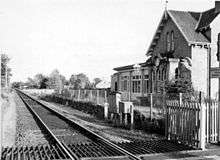Inverness and Aberdeen Junction Railway
| Inverness and Aberdeen Junction Railway | ||||||||||||||||||||||||||||||||||||||||||||||||||||||||||||||||||||||||||||||||||||||||||||||||||||||||||||||||||||||||||||||||||||||||||||||||||||||||||||||||||||||||||||||||||||||||||||||||||||||||||||||||||||||||||||||||||||||||||||||
|---|---|---|---|---|---|---|---|---|---|---|---|---|---|---|---|---|---|---|---|---|---|---|---|---|---|---|---|---|---|---|---|---|---|---|---|---|---|---|---|---|---|---|---|---|---|---|---|---|---|---|---|---|---|---|---|---|---|---|---|---|---|---|---|---|---|---|---|---|---|---|---|---|---|---|---|---|---|---|---|---|---|---|---|---|---|---|---|---|---|---|---|---|---|---|---|---|---|---|---|---|---|---|---|---|---|---|---|---|---|---|---|---|---|---|---|---|---|---|---|---|---|---|---|---|---|---|---|---|---|---|---|---|---|---|---|---|---|---|---|---|---|---|---|---|---|---|---|---|---|---|---|---|---|---|---|---|---|---|---|---|---|---|---|---|---|---|---|---|---|---|---|---|---|---|---|---|---|---|---|---|---|---|---|---|---|---|---|---|---|---|---|---|---|---|---|---|---|---|---|---|---|---|---|---|---|---|---|---|---|---|---|---|---|---|---|---|---|---|---|---|---|---|---|---|---|---|---|---|---|---|---|---|---|---|---|---|---|---|
| ||||||||||||||||||||||||||||||||||||||||||||||||||||||||||||||||||||||||||||||||||||||||||||||||||||||||||||||||||||||||||||||||||||||||||||||||||||||||||||||||||||||||||||||||||||||||||||||||||||||||||||||||||||||||||||||||||||||||||||||
| ||||||||||||||||||||||||||||||||||||||||||||||||||||||||||||||||||||||||||||||||||||||||||||||||||||||||||||||||||||||||||||||||||||||||||||||||||||||||||||||||||||||||||||||||||||||||||||||||||||||||||||||||||||||||||||||||||||||||||||||
Inverness and Aberdeen Junction Railway is an historic railway in Scotland.
History
The Inverness an Aberdeen Junction Railway was a railway company that constructed a line between Nairn and Forres in Scotland. It opened in 1857 and 1858. It merged with the Inverness and Perth Junction Railway to form the Highland Railway on 1 February 1865.
Its main line remains in use today as part of the line between Aberdeen and Inverness.
Findhorn Railway
When the line between Elgin and Keith was opened in August 1858, its route ran inland, away from the coast, between Elgin and Nairn, and many small coastal settlements were remote from the new railway.
Local interests in Findhorn, finding themselves rather isolated between Findhorn Bay and the open waters of Burghead Bay, promoted a branch line, and this received authorising powers on 19 April 1859, incorporating the Findhorn Railway with capital of £9,000.[1] The terrain was easy, mostly running on sand, and a three-mile line was designed, making a junction a short distance east of Kinloss station on the I&AJR main line. Joseph Mitchell was the engineer and Charles Brand of Montrose was the contractor.[2]
The line opened on 16 April 1860,[note 1] and trains were worked by the company itself, although rolling stock may have been hired from the larger company. The wooden station building of Kinloss was relocated so as to be at the point of junction of the Findhorn line, a distance of about 300 yards. The Company had one locomotive, an 0-4-0 saddle tank built by Neilson & Co of Glasgow in 1860.
Once opened, the company immediately found that available traffic did not cover basic operating expenses, and it was soon in serious financial difficulty. The Findhorn Railway appealed to the I&AJR for help, and the larger company took it over, effective from 1 March 1862.[note 2] (The I&AJR became a constituent of the Highland Railway in 1865.) The I&AJR too found that it was impossible to cover operating expenses, estimated at £800 annually, and it was renegotiated with the Highland Railway in March 1867 and again in 1867. At the latter date the Findhorn Railway's directors were made responsible for the future shortfall, but they withdrew that undertaking in January 1869, and the line closed at the end of January 1869.[note 3] Occasional goods trains ran until 1880.[note 4] The Findhorn Company's own locomotive was disposed of to the I&AJR in 1862, becoming that company's no 16A.[note 5] The Kinloss station was relocated to its earlier position.[2][3]
Findhorn's activity as a port was severely limited by silting and a sand bar at the entrance to the harbour, which prevented all but the smallest vessels from entering.[4][5]
Little remains of the track bed, partly because of the construction of the RAF base, Kinloss, over its route. Its junction with the mainline can be still be traced and is overgrown with a group of pine trees.
Connections to other lines
- Inverness and Nairn Railway at Nairn
- Inverness and Perth Junction Railway at Forres
- Morayshire Railway at Elgin and Orton
- Buckie and Portessie Branch of the Highland Railway at Keith Junction
- Keith and Dufftown Railway at Keith Junction
- Great North of Scotland Railway at Keith Junction
Current operations

The main line continues in use as part of the Aberdeen to Inverness line: passenger services are provided by Abellio ScotRail at approximately a two-hourly interval on weekdays; there is a minimal service on Sundays. Stations within the original extent of the line are open at Nairn, Forres, Elgin and Keith.
Connections to adjacent lines are also closed, with the exception of the Hopeman Branch which was used for freight traffic to Burghead Maltings until 1992 - it remains intact through to Burghead but was mothballed in 1998 and has seen no traffic since then (it is now heavily overgrown).
The old station at Forres is closed and only one platform out of the previous six at the new station at Forres is now in service. The Keith and Dufftown Railway platform at Keith Junction is still in use, though the branch beyond a short stub is closed.[6]
Freight traffic is limited to occasional trainloads of whisky & containers to/from Elgin, where the former GNSR Elgin East station yard is still operational.
Heritage lines
The Keith and Dufftown Railway heritage group reopened the Dufftown line beyond Keith Town in 2001, and they hope to reinstate the missing link back to the national network at Keith in the long term.
Notes
References
- ↑ E F Carter, An Historical Geography of the Railways of the British Isles, Cassell, London, 1959
- 1 2 David Ross, The Highland Railway, Tempus Publishing Limited, Stroud, 2005, ISBN 0 7524 3479 9
- ↑ M E Quick, Railway Passenger Stations in England Scotland and Wales—A Chronology, The Railway and Canal Historical Society, 2002
- ↑ H A Vallance, The Findhorn Railway, Journal of the Railway and Canal Historical Society, Volume 2, number 2, March 1956
- ↑ H A Vallance, The Highland Railway, David & Charles, Newton Abbot, fourth edition 1985, ISBN 0 946537 24 0
- ↑ Network Rail, Sectional Appendix, Scotland
Sources
- Butt, R. V. J. (1995). The Directory of Railway Stations: details every public and private passenger station, halt, platform and stopping place, past and present (1st ed.). Sparkford: Patrick Stephens Ltd. ISBN 978-1-85260-508-7. OCLC 60251199.
- RAILSCOT on Inverness and Aberdeen Junction Railway
- RAILSCOT on Findhorn Railway
- RAILSCOT on Hopeman Branch